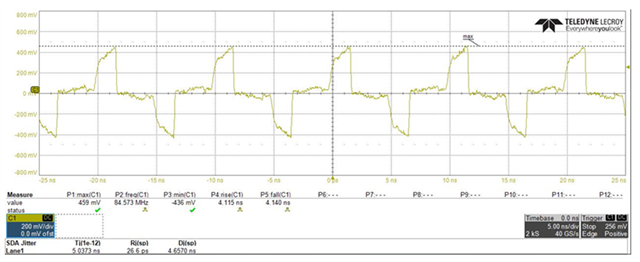Tool/software:
Hi team,
My customer Bosch have some questions about PCIe CLK as below:
About PCIe clock from RC to EP, some applications use 220nF capacitors in series, while some use 0 ohm resistors. What conditions determine whether to connect a capacitor or a resistor?

2. Is the PCIE clock classified as voltage type or current type device? What type is usually used and how to know a specific device belongs to which type?
3. Can you please feedback some comment about the PCIe CLK waveform below? In which condition will lead to this results.

Best Regards,
Xiaowei Zhang

